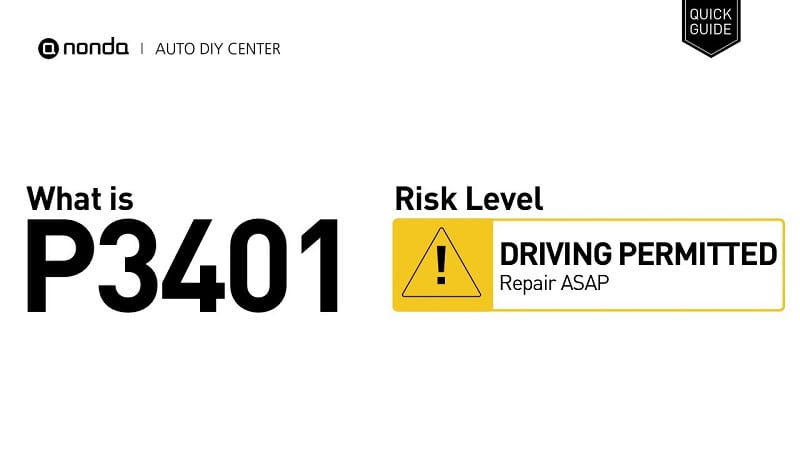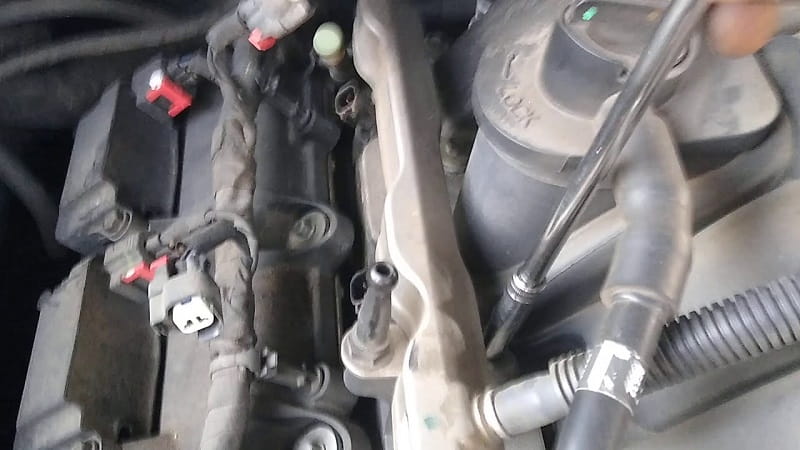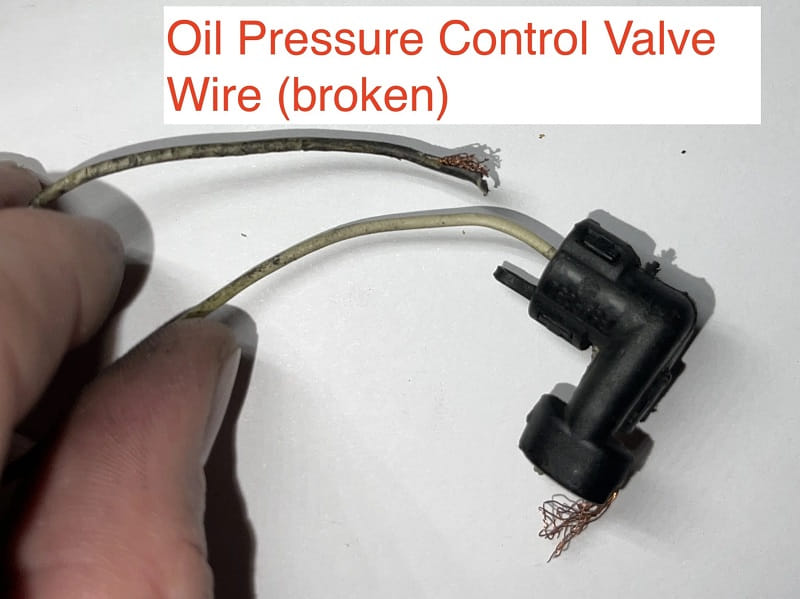This post contains affiliate links. This means I will make a commission at no extra cost to you should you click through and make a purchase [ “As an Amazon Associate, I earn from qualifying purchases.” ]. Read the full disclosure here.
Understanding DTC P3401: Cylinder 1 Deactivation/Intake Valve Control Circuit/Open GuideMechanic.Com With today’s growing demand for improved fuel efficiency and reduced emissions, many modern engines—especially V6 and V8 configurations—utilize cylinder deactivation technology.
This feature allows certain cylinders to shut down under light load to save fuel. One of the trouble codes related to this system is P3401, which specifically refers to cylinder 1 in the deactivation circuit.
This article explains the P3401 diagnostic trouble code, its implications, root causes, diagnostic steps, and repair strategies to help vehicle owners and technicians alike understand and address this issue effectively.
See Also: P3402 Cylinder 1 Deactivation/Intake Valve Control Circuit Performance
Understanding DTC P3401: Cylinder 1 Deactivation/Intake Valve Control Circuit/Open
What Does P3401 Mean?

DTC P3401 stands for:
“Cylinder 1 Deactivation/Intake Valve Control Circuit/Open”
This code is typically triggered when the Engine Control Module (ECM) or Powertrain Control Module (PCM) detects that it cannot control the intake valve for cylinder 1 during cylinder deactivation.
The “circuit/open” portion of the code means the system has identified either a break in the electrical circuit or no response from the control solenoid for the intake valve on cylinder 1.
This DTC is especially common in vehicles equipped with Active Fuel Management (AFM) or Variable Cylinder Management (VCM) systems, such as those produced by General Motors (Chevrolet, GMC) and Honda.
The Role of Cylinder Deactivation Systems
Cylinder deactivation systems temporarily disable specific engine cylinders (usually half in V-type engines) under light-load conditions to improve fuel economy. This is achieved by:
- Shutting off fuel injection and spark to selected cylinders.
- Disabling the operation of the intake and exhaust valves via special deactivation lifters.
- The system is typically engaged when cruising at steady speeds and disengaged under acceleration or high load.
Cylinder 1 is part of Bank 1 in a V-engine. A failure to control the intake valve in cylinder 1 means the ECM cannot manage the combustion cycle correctly during deactivation, prompting a check engine light and triggering DTC P3401.
Vehicles Commonly Affected
P3401 is most commonly seen in vehicles with cylinder deactivation systems such as:
- Chevrolet Silverado / Suburban / Tahoe (V8 engines with AFM)
- GMC Sierra / Yukon
- Chevrolet Impala, Camaro, and Malibu
- Honda Odyssey / Pilot / Ridgeline (VCM-equipped)
- Cadillac CTS / Escalade
These engines use oil pressure-controlled solenoids to deactivate the valves, making the system sensitive to both electrical and mechanical faults.
Understanding DTC P3401: Cylinder 1 Deactivation/Intake Valve Control Circuit/Open
Symptoms of Code P3401

If your vehicle is displaying the P3401 code, you might notice one or more of the following symptoms:
- Check Engine Light (CEL) is illuminated
- Poor fuel economy (due to cylinder deactivation failure)
- Rough idle or engine misfire
- Reduced engine performance
- Tapping or ticking noise from the valve train
- Hard starts or engine hesitation
- In some cases, engine stalling
In many cases, drivability may remain relatively normal, but fuel savings and efficiency features are disabled until the fault is resolved.
Common Causes of P3401
Several issues can trigger P3401. The most common include:
1. Faulty Cylinder Deactivation Solenoid (Oil Control Valve)
The solenoid responsible for controlling oil flow to the deactivation lifter on cylinder 1 may be faulty, stuck open or closed, or electrically shorted.
2. Open or Shorted Wiring
Wiring problems such as corrosion, broken wires, or damaged insulation can interrupt communication between the PCM and the intake valve control solenoid.
3. Low or Dirty Engine Oil
Oil pressure is crucial for the operation of deactivation lifters and solenoids. Old, dirty, or low oil can prevent the system from functioning properly.
4. Faulty Lifter or Valve Mechanism
The mechanical components within the valve lifter or rocker arm can wear out or fail, preventing valve deactivation even if the solenoid is functioning.
5. Faulty ECM/PCM
Rarely, the ECM itself may malfunction or fail to control the solenoid correctly due to an internal fault or software glitch.
Understanding DTC P3401: Cylinder 1 Deactivation/Intake Valve Control Circuit/Open
Diagnosing P3401
Proper diagnosis of this code requires a step-by-step process. A scan tool that supports enhanced diagnostics (OEM or bi-directional capabilities) is helpful.
Step 1: Retrieve and Confirm the Code
Use an OBD-II scanner to retrieve DTCs. Confirm P3401 is present and check for any companion codes (e.g., P0521 – Engine Oil Pressure Sensor).
Step 2: Visual Inspection
Inspect the wiring harness around the valve cover or solenoid control module.
Look for broken connectors, frayed wires, or signs of oil contamination on electrical connectors.
Step 3: Check Engine Oil
Verify oil level is within specifications.
Check for oil sludge or contamination.
Replace oil and filter if necessary using manufacturer-recommended viscosity.
Step 4: Test the Intake Valve Control Solenoid
Using a multimeter, test the solenoid’s resistance (typically 5–20 ohms).
Check for proper voltage and ground signals at the solenoid connector.
Activate the solenoid with a scan tool or directly apply 12V to verify it opens/closes.
Step 5: Check Oil Pressure
Use a mechanical gauge to check oil pressure at idle and under load.
Compare readings to OEM specifications. Low oil pressure can cause AFM system failure.
Step 6: ECM Testing
If all else checks out, and solenoid and wiring are functional, test the ECM outputs.
Reprogramming or ECM replacement may be necessary in rare cases.
Understanding DTC P3401: Cylinder 1 Deactivation/Intake Valve Control Circuit/Open
How to Fix P3401

Based on the diagnosis, the most effective repair steps include:
1. Replace Faulty Solenoid
If the intake valve control solenoid is malfunctioning or shorted, replace it. These are usually located in a valley cover assembly or on the cylinder head.
2. Repair or Replace Damaged Wiring
Replace or repair any damaged wires or connectors between the PCM and solenoid.
3. Change the Engine Oil
If the oil is dirty, old, or of the wrong viscosity, change it along with the oil filter.
4. Replace Deactivation Lifter
If mechanical damage is found in the valve lifter, replacement may be necessary. This may require partial engine disassembly and is labor-intensive.
5. ECM Reprogramming or Replacement
In rare cases, ECM reprogramming or replacement may be necessary if the signal output to the solenoid is faulty.
Understanding DTC P3401: Cylinder 1 Deactivation/Intake Valve Control Circuit/Open
Preventing P3401 in the Future
Here are some ways to reduce the risk of cylinder deactivation system failures:
- Use high-quality engine oil with the correct viscosity.
- Follow a strict oil change interval, especially on vehicles with AFM or VCM.
- Inspect wiring and connectors regularly, especially after heavy engine maintenance.
- Respond quickly to oil pressure or performance-related warning lights.
- Use OEM parts for repairs to ensure proper fit and function.
Conclusion
The P3401 DTC is a specific and important code pointing to a problem in the cylinder 1 intake valve control circuit, commonly part of the cylinder deactivation system.
While it may seem like a minor issue, leaving it unresolved can impact fuel efficiency, engine performance, and in some cases, lead to internal engine damage.
By understanding how this system works and following a structured approach to diagnosis and repair, technicians and vehicle owners can quickly address the issue and restore optimal engine operation. Regular oil maintenance and electrical inspections are key to preventing this code from recurring.
- 4×4 Truck for Sale Used - October 21, 2025
- 4×4 Truck for Sale Under 20K - October 15, 2025
- 4×4 Truck for Sale QLD - October 12, 2025
